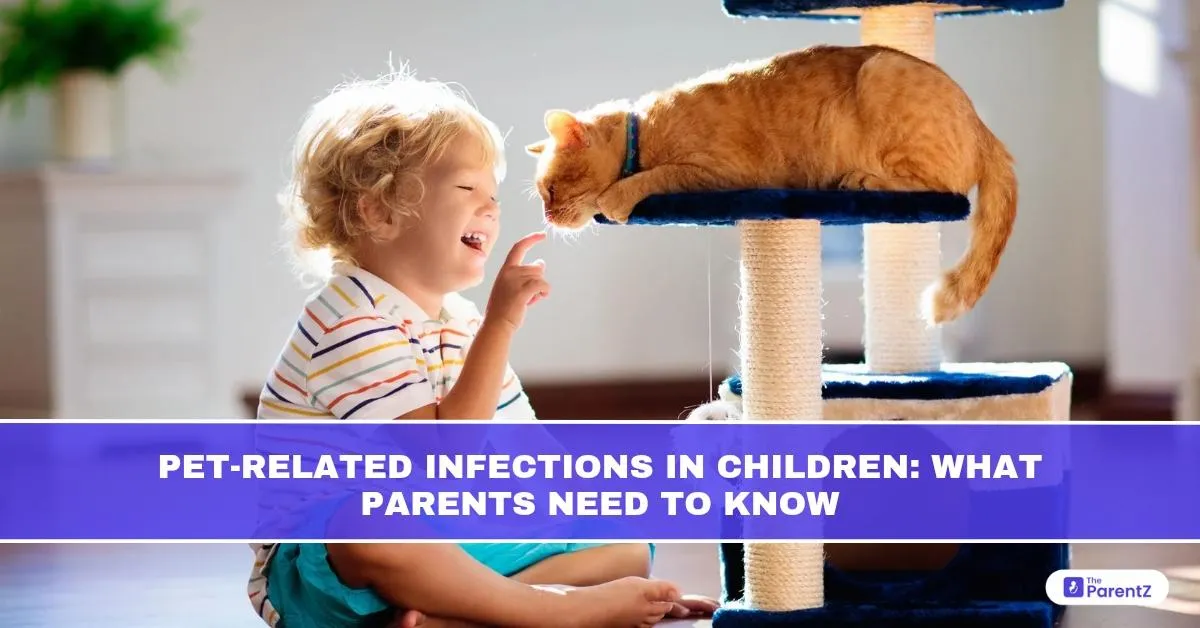For many families, a pet is more than just an animal—it’s a companion, a source of joy, and often a child’s first best friend. Watching your little one bond with a dog, cat, or even a turtle is heartwarming. But while pets offer comfort and teach responsibility, they can also carry germs and parasites that may cause infections in children.
That doesn’t mean you need to say goodbye to your beloved pet. Instead, understanding which infections are possible, how they’re transmitted, and what warning signs to watch for can help you protect both your child and your furry (or feathered or scaly) family members.
Why Children Are More at Risk
Children, especially those under 5, are more vulnerable to pet-related infections because:
- They have immature immune systems.
- They’re more likely to touch faces, mouths, or food after playing with pets.
- They may not wash hands thoroughly after handling animals.
- They often get closer physical contact with pets (like face licking or snuggling).
Awareness, not alarm, is key.
Common Pet-Related Infections in Children
1. Ringworm (Tinea)
Despite its name, ringworm is not a worm, but a fungal infection often spread by cats, dogs, or even guinea pigs.
Symptoms in children:
- Round, red, itchy rash with a raised edge
- Hair loss in the affected area (scalp ringworm)
- Can spread quickly among siblings
Prevention:
Avoid close contact with pets that have bald patches or skin lesions. Ensure regular vet check-ups.
2. Toxocariasis
Caused by roundworms found in the intestines of dogs and cats.
How it spreads:
Children accidentally ingest microscopic eggs from soil, sandboxes, or surfaces contaminated with pet feces.
Symptoms:
- Fever
- Cough or wheezing
- Eye problems (in rare cases, it can affect vision)
- Fatigue or abdominal pain
Prevention:
Deworm pets regularly and always clean up animal waste. Teach children to wash their hands after playing outdoors.
3. Cat Scratch Disease (Bartonella henselae)
Caused by a bacteria found in cats, especially kittens, and transmitted through scratches or bites.
Symptoms:
- Swollen, tender lymph nodes (usually near the scratch site)
- Fever
- Fatigue
- Headache
Treatment:
Often mild and self-limiting, but some cases may need antibiotics.
4. Campylobacter and Salmonella
These bacteria can be found in the stool of reptiles (like turtles, lizards), chickens, and sometimes cats and dogs.
How children get infected:
Touching the animal or its enclosure and then touching food, face, or mouth.
Symptoms:
- Diarrhea (sometimes bloody)
- Vomiting
- Fever
- Dehydration in young children
Prevention:
- Avoid reptiles or amphibians as pets for kids under 5
- Wash hands thoroughly after touching pets or cleaning cages
- Never allow pets near kitchen counters or food prep areas
5. Toxoplasmosis
A parasitic infection commonly associated with cat feces.
Risk to children:
Usually mild but can cause flu-like symptoms. It’s more dangerous in pregnant women, potentially affecting the unborn baby.
Prevention:
- Keep litter boxes clean (ideally by an adult)
- Wash hands after cleaning
- Avoid feeding cats raw meat
6. Scabies and Fleas
Pets can sometimes carry mites or fleas that irritate your child’s skin.
Symptoms:
- Intense itching
- Red bumps or rash
- Possible secondary skin infections from scratching
Treatment:
Topical creams and pet treatments. All bedding and clothing should be washed thoroughly.
When to Call the Doctor
Reach out to your pediatrician if your child develops:
- Fever after a bite or scratch
- Unusual rashes or sores that don’t heal
- Swollen lymph nodes
- Prolonged diarrhea or vomiting
- Eye redness or vision changes
- Persistent fatigue or irritability
Also, inform the doctor if your child is immunocompromised, as infections may be more serious in these cases.
Safe Practices for Pet-Friendly Families
You don’t need to avoid pets, but a few basic precautions can go a long way:
Hygiene habits:
- Encourage handwashing after petting or feeding animals.
- Discourage kissing pets or letting them lick faces.
- Keep pet bowls, litter boxes, and cages out of the kitchen.
Pet care:
- Take your pet to the veterinarian regularly.
- Deworm and vaccinate as advised.
- Check for fleas or skin conditions regularly.
- Keep litter areas and pet bedding clean.
Boundaries:
- Supervise young children around animals, especially unfamiliar ones.
- Teach children how to approach pets gently and safely.
- Avoid exotic pets (like turtles or snakes) for very young children.
Conclusion: Love Your Pet, Protect Your Child
Having pets in your home can teach children empathy, responsibility, and provide endless companionship. But just like you baby-proof your home, it’s equally important to pet-proof your health practices.
By knowing the risks, practicing good hygiene, and getting regular vet checkups, you can create a happy, safe environment for both your children and your animals.








Be the first one to comment on this story.